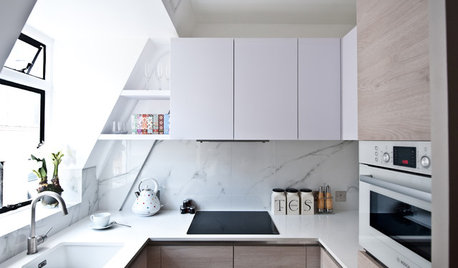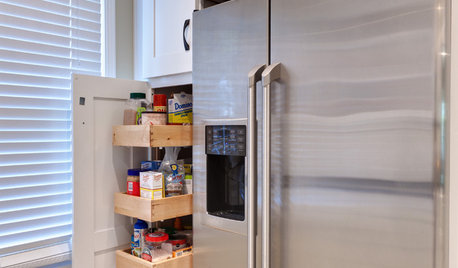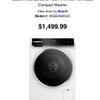Fisher & Paykel EcoSmart - IEC 4th Addition ?'s
an0nemus
13 years ago
Related Stories

HOMES AROUND THE WORLDHouzz Tour: A 17th-Century Home Moves Up in the World
Intelligent design solutions and a respect for the building’s heritage create a welcoming home with character in London
Full Story
BEFORE AND AFTERSKitchen of the Week: Classic White Farmhouse Style Restored
A couple remodel their kitchen to better match their 19th-century Oregon home’s style
Full Story
HOUZZ TOURSHouzz Tour: A Victorian Cottage in Sydney Opens Up
Colors, not walls, now define spaces in this once-dreary home — and the new airy garden overlook helps too
Full Story
KITCHEN DESIGN20 Kitchen Must-Haves From Houzz Readers
We asked you to tell us your top kitchen amenities. See what popular kitchen features made the list
Full Story
KITCHEN DESIGNKitchen of the Week: Industrial Design’s Softer Side
Dark gray cabinets and stainless steel mix with warm oak accents in a bright, family-friendly London kitchen
Full Story
THE HARDWORKING HOMESmart Ways to Make the Most of a Compact Kitchen
Minimal square footage is no barrier to fulfilling your culinary dreams. These tips will help you squeeze the most out of your space
Full Story
KITCHEN DESIGNA Cook’s 6 Tips for Buying Kitchen Appliances
An avid home chef answers tricky questions about choosing the right oven, stovetop, vent hood and more
Full Story
HOUSEKEEPINGDishwasher vs. Hand-Washing Debate Finally Solved — Sort Of
Readers in 8 countries weigh in on whether an appliance saves time, water and sanity or if washing by hand is the only saving grace
Full Story
REMODELING GUIDESWhere to Splurge, Where to Save in Your Remodel
Learn how to balance your budget and set priorities to get the home features you want with the least compromise
Full Story
KITCHEN STORAGEPantry Placement: How to Find the Sweet Spot for Food Storage
Maybe it's a walk-in. Maybe it's cabinets flanking the fridge. We help you figure out the best kitchen pantry type and location for you
Full StorySponsored
Columbus Area's Luxury Design Build Firm | 17x Best of Houzz Winner!
More Discussions










dadoes
an0nemusOriginal Author
Related Professionals
Greensboro Kitchen & Bathroom Designers · Palm Harbor Kitchen & Bathroom Designers · Peru Kitchen & Bathroom Designers · Apex Kitchen & Bathroom Remodelers · Avondale Kitchen & Bathroom Remodelers · Glendale Heights Cabinets & Cabinetry · Jefferson Valley-Yorktown Cabinets & Cabinetry · Maywood Cabinets & Cabinetry · Ridgefield Cabinets & Cabinetry · Whitney Cabinets & Cabinetry · Beaumont Custom Closet Designers · El Segundo Custom Closet Designers · Laconia Flooring Contractors · Stoneham Flooring Contractors · Waltham Flooring Contractorsdadoes
Karen Mickleson
dadoes
Karen Mickleson
dadoes